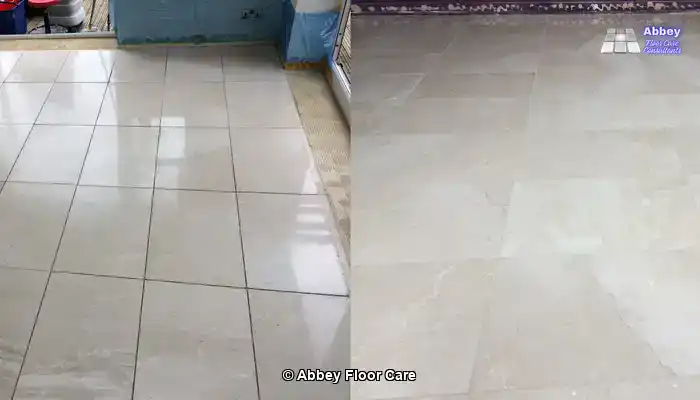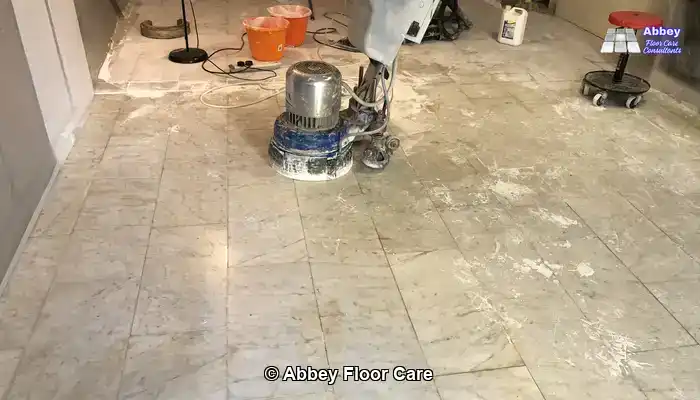
Last Updated on November 6, 2025 by David
Unveiling the Possibility: Can Marble Be Restored to Its Original Glory?

Essential Tips for UK Homeowners on Protecting and Caring for Marble Surfaces
Marble is renowned for its stunning elegance, providing a luxurious aesthetic to any space. However, over time, it can gradually lose its initial clarity, colour, and shine, leaving homeowners concerned about its appearance. Common issues such as scratches, dull patches, etch marks, and stubborn stains often lead to questions about whether their marble can ever regain that “like new” look. This comprehensive guide delves into the realistic expectations of marble restoration, including its inherent limitations and effective maintenance strategies to sustain the dazzling results. Whether you’re dealing with acid damage, deep wear, or simply a tired surface, understanding the restoration process allows you to make informed decisions about the upkeep of your cherished stone.
Setting the Standard: What Does “Like New” Mean in Marble Restoration?

How to Achieve Exceptional Shine, Clarity, and Depth of Colour in Marble Floors
When homeowners envision their marble looking “like new,” they often refer to the original shine and clarity that captivates the eye — the interaction of light with the stone’s surface reveals its inherent colour depth. A skilled restoration can effectively replicate this stunning effect by addressing surface damage and refining the finish. Consequently, the floor appears vibrant, smooth, and immaculate, often becoming indistinguishable from a newly installed slab of marble. This transformation enhances not only the visual allure of your home but also significantly boosts the property’s overall value, making it a smart investment for any homeowner committed to maintaining the beauty of their interiors.
Identifying Cosmetic Wear Versus Structural Damage in Your Marble: Key Insights
It is essential to distinguish between superficial cosmetic wear and deeper structural issues when evaluating your marble’s condition. Surface scratches, dullness, and light etching can generally be remedied through honing and polishing methods. However, more severe issues such as cracks, chips, and internal discoloration may not completely disappear through restoration efforts. While the process can enhance both the visible and tactile characteristics of the stone, it does not reconstruct the marble’s integrity. Understanding this distinction helps to set realistic expectations and fosters satisfaction with the final results, ensuring that homeowners are delighted with the appearance of their rejuvenated marble surfaces.
Diving into the Mechanics of Marble Restoration Techniques: Capabilities and Limitations

Solutions for Deep Scratches, Chips, and Acid Etching: What You Need to Know
Restoration techniques can effectively eliminate most surface-level damage, including scratches and mild etching caused by acidic substances like lemon juice or vinegar. These types of marks dull the finish and disrupt the clarity of the stone, but honing and polishing can generally restore a smooth, reflective surface. However, deeper scratches and chips require specialized grinding or filling techniques to achieve the best results. While the overall appearance can see substantial improvement, some imperfections may still be slightly noticeable depending on their depth and location. This meticulous attention to detail ensures that the marble not only looks enhanced but also has an extended lifespan, significantly improving its durability over time.
Understanding UV Damage and Internal Discoloration in Marble: The Effects Explained
Marble exposed to intense sunlight over time may suffer from fading or yellowing due to various factors. Here’s an overview of why this occurs:
UV Ray Damage (Fading): Sunlight, particularly its ultraviolet (UV) rays, can cause the natural pigments within the stone to fade gradually. This photochemical reaction may lead to the color becoming less vibrant or appearing “washed out.” This effect is often more pronounced in specific shades of marble, underscoring the necessity of understanding how to protect your investment effectively.
-
- Yellowing: The yellowing of white marble is frequently attributed to prolonged exposure to UV light, which can significantly degrade the stone’s appearance over time.
- Iron Oxidation: Many varieties of white marble contain naturally occurring trace amounts of iron. When exposed to moisture and oxidizers (such as air or water), the iron may rust, a process accelerated by sunlight and heat, resulting in yellow or brown discoloration.
- Surface Degradation: UV rays can also break down sealants or resins applied to the marble, leading to a yellowing effect and diminishing the overall appearance of the surface.
While marble is known for its durability, it is more susceptible to UV-induced changes compared to extremely hard stones like granite or quartzite. This concern is especially relevant for marble in outdoor settings or indoor areas subjected to prolonged, intense, direct sunlight (for example, near a sunny windowsill or large, unshaded windows). To protect marble effectively, it is often advisable to use:
- UV-resistant sealants that offer an effective barrier against damage.
- Shades, blinds, or curtains for indoor applications to limit direct exposure and prevent deterioration.
- Strategic placement of furniture to minimize direct sunlight exposure on marble surfaces.
While restoration can significantly improve the appearance of the marble surface, it cannot reverse color changes that occur beneath the surface. Therefore, understanding these limitations is crucial for homeowners aiming to maintain the beauty of their marble floors over the long term.
Before and After Visuals of Marble Impacted by Iron Oxide Stains: Witness the Transformation


In these situations, the focus shifts from achieving a “like new” appearance to attaining a cleaner, more uniform finish that minimizes visual distractions. Understanding these limitations allows homeowners to set realistic expectations for their marble restoration journey and appreciate the enhancements made throughout the process.
Understanding the Processes of Honing, Polishing, and Complete Restoration: What’s Involved?
Determining When Polishing Suffices: Focusing on Surface Treatment Techniques
Polishing serves as a surface-level treatment aimed at restoring shine by smoothing out fine scratches and enhancing reflectivity. This method is particularly beneficial for dull marble that remains otherwise intact. If the stone has lost its gloss due to wear or mild etching, polishing alone might be sufficient to restore its “like new” appearance. However, it’s essential to note that polishing will not address deeper flaws or rectify uneven surfaces, which may require more intensive processes to achieve optimal results.
Recognizing When Honing or Grinding Is Required: Understanding Deeper Restoration Techniques
Honing penetrates deeper than polishing, removing a thin layer of the marble to eliminate scratches, etch marks, and surface damage. For more severe wear, grinding may be necessary to level the stone and completely reset the finish. These processes are more intensive but yield dramatic results. When homeowners seek a truly refreshed surface — one that resembles and feels like new — honing or grinding becomes an essential part of the restoration process, offering a thorough rejuvenation of the marble’s surface.
Assessing the Effectiveness of DIY Restoration Kits Versus Professional Services: Key Considerations
Evaluating What DIY Kits Can Accomplish: Understanding Their Effectiveness
DIY marble restoration kits typically come with polishing powders, sealers, and basic tools. These products can enhance surface shine and reduce the visibility of light etching. For small areas or minor dullness, they provide an economical option for refreshing the stone’s appearance. Nonetheless, they rarely achieve a true “like new” finish. Without access to professional-grade abrasives and machinery, deeper flaws often remain unaddressed, leading to inconsistent results and potentially disappointing outcomes for homeowners seeking a pristine appearance.
The Significance of Professional Tools in Restoration: Why Expertise Matters
Professional restoration employs specialized diamond abrasives, rotary machines, and graded polishing compounds that function in stages. This advanced equipment enables technicians to level the surface, remove deep damage, and refine the finish with precision. DIY kits typically lack the power and control necessary to ensure consistent results across larger areas. For homeowners who desire a flawless, enduring outcome, utilizing professional tools and expertise makes a significant difference, ensuring that the restoration meets high standards of quality and durability.
What is the Longevity of a Restored Marble Surface? Understanding Durability and Maintenance
Best Practices for Sealing, Cleaning, and Managing Wear Patterns for Longevity
After restoration, applying a high-quality sealer to the marble is crucial for preserving the finish, as it blocks moisture and reduces stain absorption. A premium sealer can last anywhere from 1 to 3 years, depending on usage patterns and foot traffic. Regular cleaning with pH-neutral products and avoiding abrasive pads or acidic spills will help prolong the life of the restored surface. In high-traffic areas, the finish may gradually dull, but with proper care, the clarity and shine can be maintained for many years, highlighting the importance of adhering to appropriate maintenance routines.
Is Restoration a Repeatable Process? Understanding Maintenance Cycles for Marble
Absolutely, marble restoration is a process that can be repeated. If the surface becomes dull or scratched again, it can be rehoned and repolished. However, it is essential to acknowledge that each cycle removes a small amount of stone, making it advisable to minimize excessive wear between treatments. Homeowners who follow a maintenance routine — which includes resealing and gentle cleaning — will find that restoration remains a valuable investment over time, allowing the marble to retain its beauty and elegance for many years to come.
Does Restored Marble Continue to Age Naturally? Understanding the Effects of Patina
Distinguishing Between Natural Patina and Artificial Gloss: Insights into the Aging Process
Even after restoration, marble continues to age naturally. Over time, subtle wear patterns, micro-abrasions, and environmental exposure contribute to the development of a soft patina — a gentle sheen that reflects the stone’s unique history. This natural aging process is distinct from the artificial gloss created through polishing and sealing. A restored surface may initially appear brand new, but it will gradually develop character over time. For many homeowners, this evolving finish adds charm and authenticity, particularly in older properties where marble is integral to the home’s narrative, enhancing the overall aesthetic appeal.
Common Inquiries from Surrey Homeowners: Insights and Clarifications
Budgeting for Your Marble Restoration Project: Typical Costs in Surrey Explained
The costs associated with marble restoration can vary significantly based on factors such as the size of the area, the condition of the marble, and the extent of restoration needed. Light polishing generally proves more economical than comprehensive grinding and honing. In Surrey, homeowners frequently choose to invest in restoration for marble situated in high-visibility areas or as part of long-term home improvement strategies. Although prices can fluctuate widely, the true value lies in preserving the stone and enhancing the property’s appeal, making it a worthwhile investment in maintaining the beauty of your home.
Can All Types of Marble Undergo Restoration? Understanding Compatibility and Limitations
Most types of marble can be restored; however, the results largely depend on the stone’s composition and overall condition. Softer marbles may exhibit wear more rapidly and respond favourably to polishing techniques. Conversely, harder varieties may require more aggressive honing methods. Some exotic stones with pronounced veining or diverse colour variations may not return to a uniform finish. A professional assessment is essential to determine what is achievable for your specific marble floor, ensuring that the restoration process aligns with your expectations and the unique characteristics of your stone.
What to Expect Regarding Aesthetics: Will the Restored Finish Match the Original Installation?
The primary goal of restoration is to recreate the original finish; however, achieving an exact match often depends on how the marble was initially installed and treated. If the stone was factory-polished, the restored surface may show slight differences in gloss level or texture. Nevertheless, most homeowners find the end result visually consistent and significantly more appealing than the worn surface they started with. Ultimately, the objective is to enhance rather than achieve perfection — and in most cases, the transformation is remarkable, contributing to the overall elegance of the space.
The article Will Restored Marble Ever Look As Good As New was first found on https://www.abbeyfloorcare.co.uk
The Article Restored Marble: Can It Ever Look As Good As New? appeared first on https://fabritec.org
The Article Restored Marble: Achieving Like-New Perfection Was Found On https://limitsofstrategy.com
The Article Restored Marble: Achieving Flawless, Like-New Finish First Appeared ON
: https://ad4sc.com
No responses yet